Maypops are a greatly under-rated plant. Their fruit is tasty, the vine long-producing, and a couple of medicines can be made out of it as well. Any down side? One of the identifying characteristics is the leaves smell like a degrading rubber sneaker.
The species starts producing in the spring and will continue until cold weather knocks them out. They sprouted locally about two months ago and are now putting on fruit. The above photo was taken along the Seminole-Wekiva Bike Trail in Lake Mary, FL. Production of green egg shaped fruit is continuous with ripening fruit on the older vine and new fruit near the growing tip. Green fruit can be eaten cooked, ripe yellow fruit raw. While the entire raw ripe fruit is edible the highly esteemed part is the sweet-sour pulp inside. To read more about the Maypop click here.
Also blossoming now are our local yucca, Yucca filamentosa. Just as the Maypop is perhaps an under-rated plant the Yucca is perhaps over-rated. You will read in many foraging books that the blossoms are edible raw. I have never found that so with our local yucca. Raw they have a wonderful texture and initial flavor but then a natural soap kicks in and leaves a bitter aftertaste. Cooked flowers, however, are quite tasty though you always have too knock out a lot of insect first. The flower spike is also edible when young. Other parts are famine food. To read more about the yucca go here.
Pawpaws are ratty in Florida, ranging from runty dwarfs to gangly, small understory trees. Their blossoms often appear a bit exotic. The fruit is hard to find primarily because woodland creatures like them. You won’t read this in foraging books but the most common location I find papaws is at the base of pine trees in scrubs. They are quite common. Another place to find pawpaws is in pastures and along the pasture fences. Often along the fence will be the dwarf pawpaw and in the pasture a larger species. Further north pawpaws become good size trees. If you want to read more about pawpaws click here.
Black Cherries are in full fruit now, ranging from still unripe ones to dark semi-sweet racemes. I say semi-sweet because no matter how ripe they always have a bit of a bitter kick back. Making wine or syrup out of the cherries usually gets rid of the bitter aftertaste. While several kinds of cherries are reported to grow in Florida I have only ever seen the Black Cherry, Prunus serotina. It’s fairly to identify because of the hair along the mid-rib of older leaves. Whether your cherry tree will have fruit is up to the woodland creatures. In some areas ripe fruit is stripped as soon as it is edible, in others you can collect most of the fruit yourself. You have to be careful, however, not to now confuse the Black Cherry with the Laurel Cherry, Prunus carolinana which is deadly. To read more about the cherries, go here
Also fruiting now is the most controversial American Black Nightshade, Solanum americanum. Several genus have one foot in edible and the other in toxic. The Nightshade is one such family, as is the Honeysuckle and the Peas. I eat S. americanum berries as a trail side nibble often to the aghast of students or even other foragers. It’s a family with a lot of misunderstanding but also justified warnings about toxicity. If I have a problem with the S. americanum it is that the fruit is not consistent. Sometimes you find some very ripe but bitter fruit. Don’t eat those. Sometimes that are also larger than usual fruit and bitter. Perhaps there is some cross pollinating going on. Always taste a ripe berry first and wait a minute or two to see if any bitterness shows up. The green berries are definitely toxic. To read more about the American Nightshade go here.
Upcoming classes this week include a familiar site, Mead Garden on Sunday, and a new location Saturday, Seminiole-Wekiva Bike Trail, and upland area with a lot of interesting edibles.
Saturday, June 8th, Seminole Wekiva Bike Trail, Longwood, FL., 32779. Meet at the Jones Trail head parking lot which is at the southeast corner of the intersection of Markham Woods Road and Long Pond Road. 9 a.m.
Sunday, June 9th, Mead Garden: 1500 S. Denning Dr., Winter Park, FL 32789, 9 a.m.
Seminole-Wekiva is an active bike trail. There are no lakes or ponds along the trail so there are no aquatic plants where we will be. But what edibles we do see we will see often. Among them are maypops, yucca, black cherry, horsemint, spurge nettle, gopher apples, reindeer moss, pawpaws, sassafras, persimmons, winged yams and elderberries.

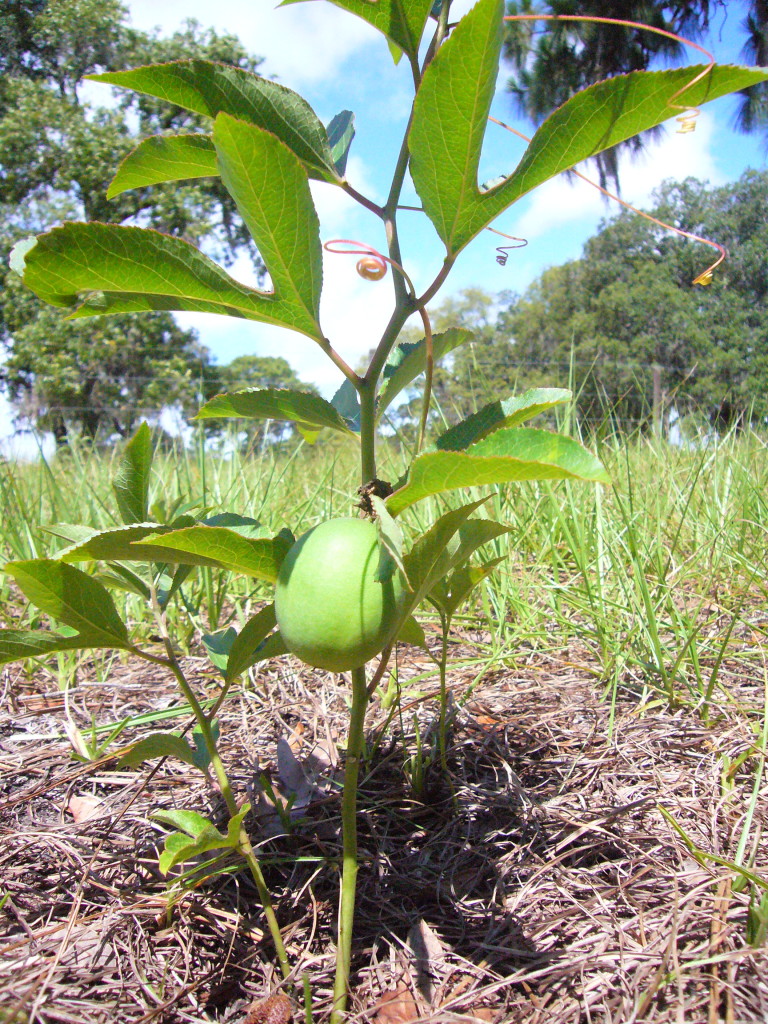
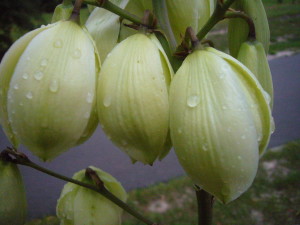
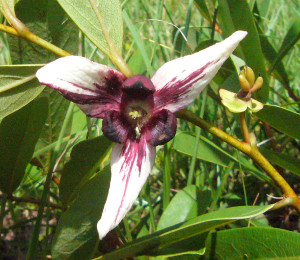
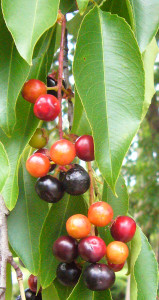
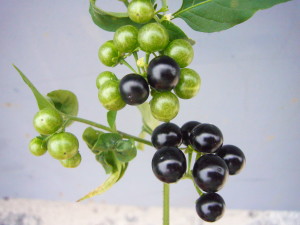
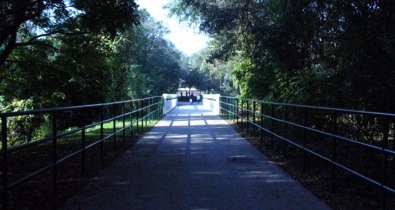

They all look so beautiful. Thank you.
Deane, I wanted to get into a Wild Edibles class, and for Southern California
there was a lady named Sunny Savage in Topanga, CA. Would you have her
telephone number (310) 728-9943 was the last number she put out there,
to know aval it was disconnected. Thanks for such a Awesome Site…
I think she’s in Minnesota for a while and just came back from three years at sea. She has a facebook page.
Can you eat the Blue passion flower fruit?
Is the blue referring to the blossom or the fruit?
The fruit of the Passiflora caerulea.
I don’t think so… some species of Passifloria can have some cyanide in them.